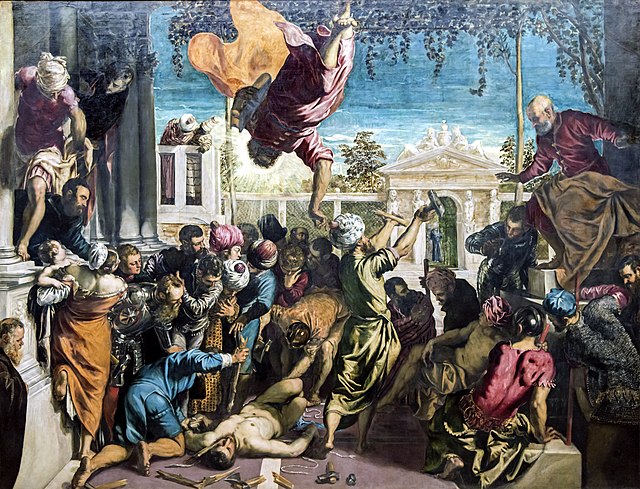A miracle is an event that is inexplicable by natural or scientific laws and accordingly gets attributed to some supernatural or praeternatural cause. Various religions often attribute a phenomenon characterized as miraculous to the actions of a supernatural being, (especially) a deity, a miracle worker, a saint, or a religious leader.
The Miracle of the Slave, a 1548 painting by Tintoretto, from the Gallerie dell'Accademia in Venice. It portrays an episode of the life of Saint Mark, patron saint of Venice, taken from Jacobus de Voragine's Golden Legend. The scene shows a saint intervening to make a slave who is about to be martyred invulnerable.
Rationalist, sceptic, and godman debunker Narendra Nayak during a miracle-exposure program in 2007.
Supernatural refers to phenomena or entities that are beyond the laws of nature. The term is derived from Medieval Latin supernaturalis, from Latin super- + natura (nature). Although the corollary term "nature" has had multiple meanings since the ancient world, the term "supernatural" emerged in the Middle Ages and did not exist in the ancient world.
Saint Peter Attempting to Walk on Water (1766), painting by François Boucher
The Archangel Michael wears a late Roman military cloak and cuirass in this 17th-century depiction by Guido Reni.
Schutzengel (English: "Guardian Angel") by Bernhard Plockhorst depicts a guardian angel watching over two children.
In Jainism, a soul travels to any one of the four states of existence after death depending on its karmas.






